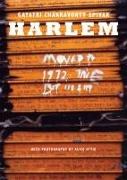Harlem
BücherAngebote / Angebote:
W. E. B. Du Bois has described the African American at the end of the nineteenth century as \u201ctwo souls in one dark body, whose dogged strength alone keeps it from being torn asunder.\u201d In the United States today, the hyphen between these two souls&mdash, African and American, African-American&mdash, is still being negotiated. In Harlem, Spivak engages with thirty-four photographs by photographer Alice Attie as she attempts teleopoiesis, a reaching toward the distant other through the empathetic power of the imagination. In the hands of Spivak, teleopoiesis is a kind of identity politics in which one disrupts identity as a result of migration or exile. For the last two decades, Spivak notes, Harlem has been the focus of major economic development. As the old Harlem disappears into a present that simultaneously demands and rejects a cultural essence, Spivak dwells in Attie⿿s images, trying to navigate some middle ground between the rock of social history and the hard place of a seamless culture. \u201cGayatri Chakravorty Spivak has probably done more long-term political good in pioneering feminist and postcolonial studies within global academia than almost any of her theoretical colleagues.\u201d&mdash, Terry Eagleton \u201cNot only does her world-renowned scholarship range widely from critiques of post-colonial discourse to feminism, Marxism, and globalization, her lifelong search for fresh insights and understanding has transcended the traditional boundaries of discipline while retaining the fire for new knowledge that is the hallmark of a great intellect.\u201d&mdash, Lee Bollinger, Columbia University
Folgt in ca. 15 Arbeitstagen




